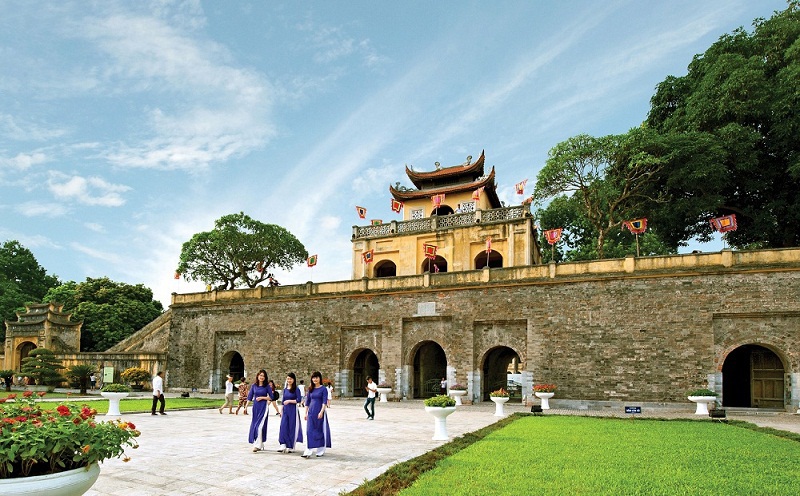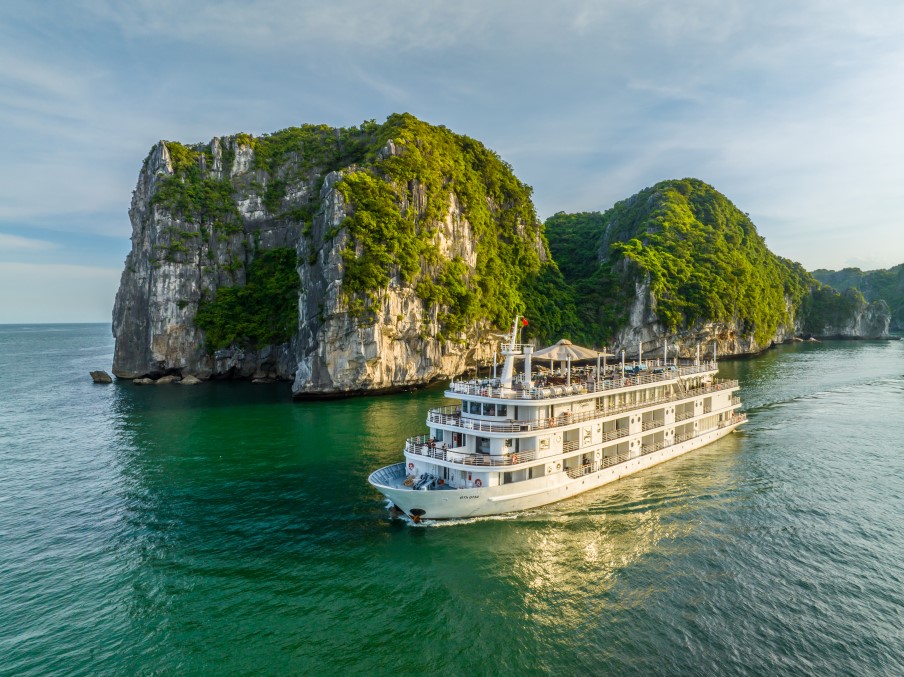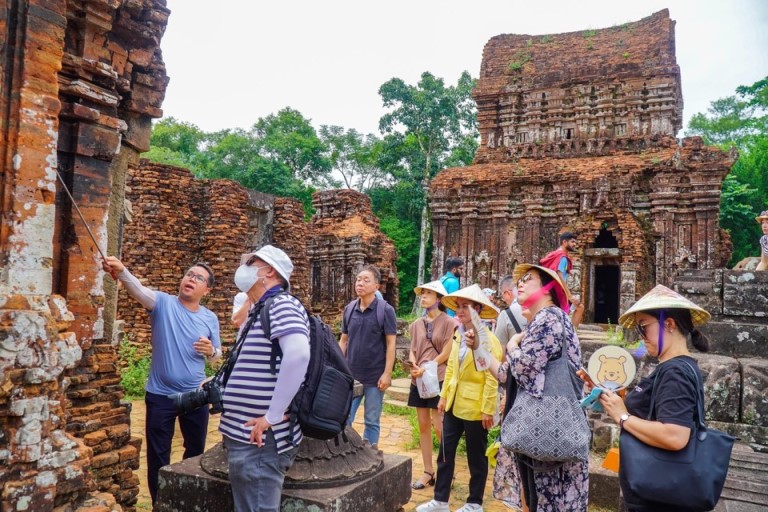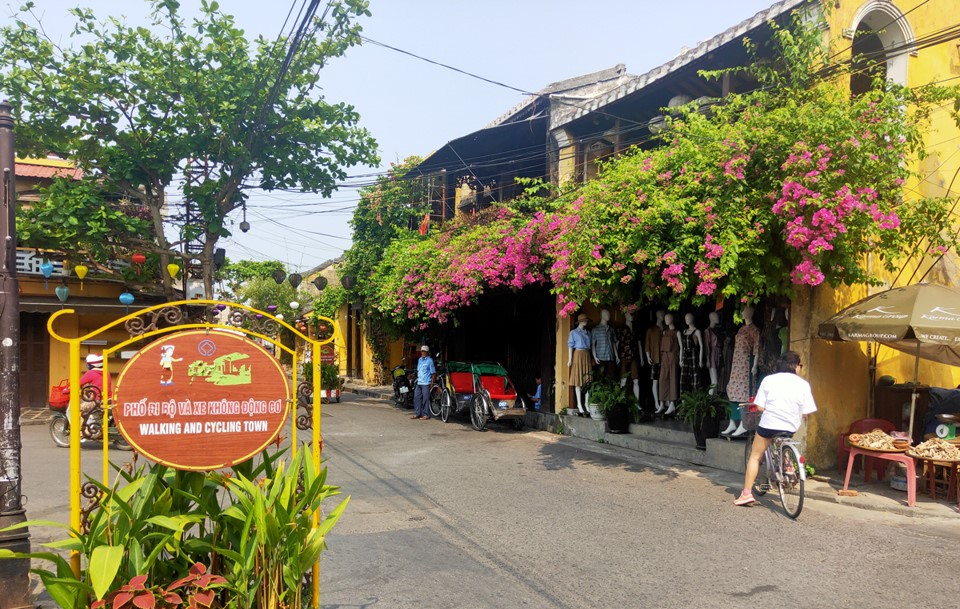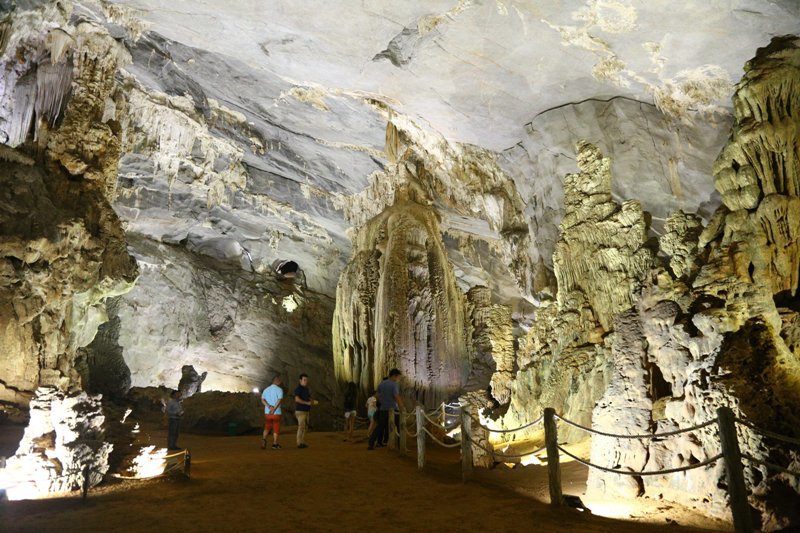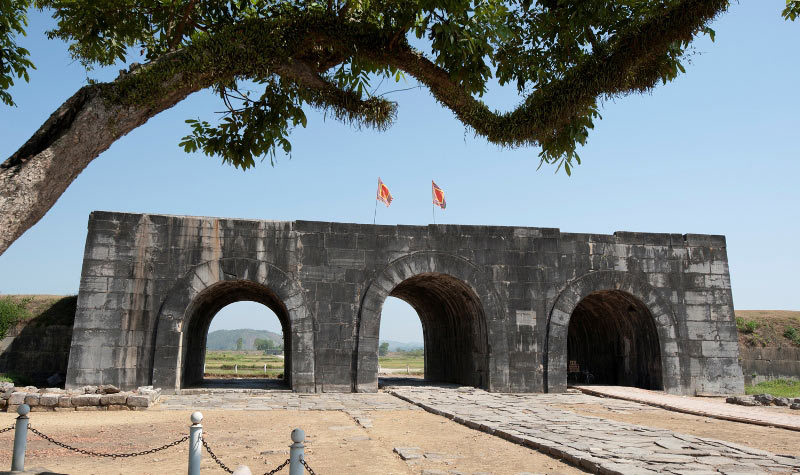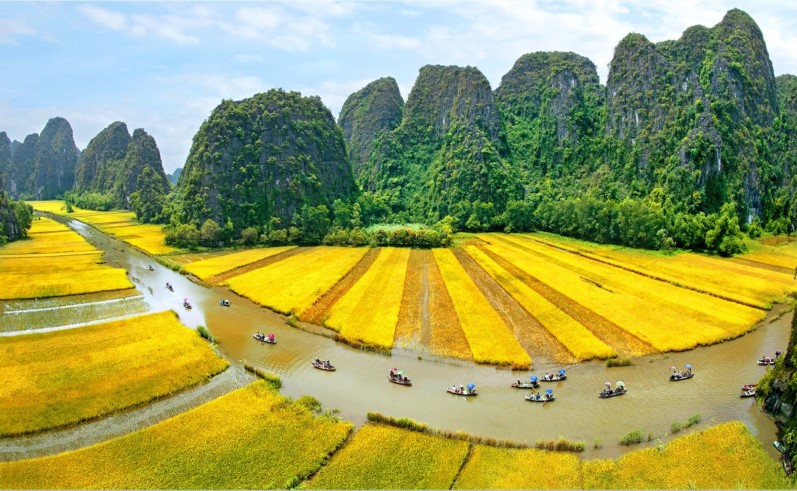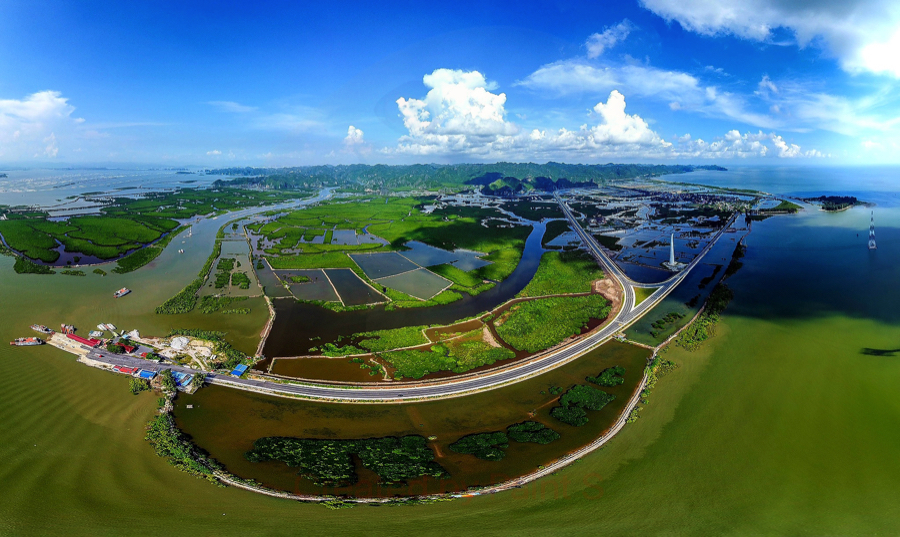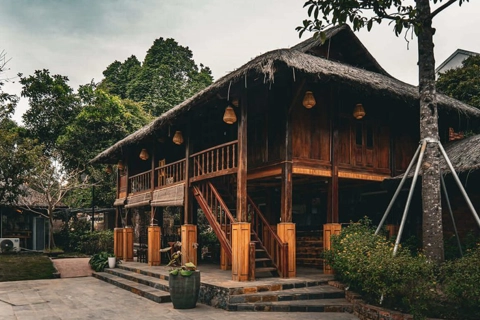Vietnam: Home to the world's cultural and natural wonders
Vietnam has nine UNESCO World Heritage Sites, which are considered to have great potential for tourism.
Vietnam has nine UNESCO-listed heritage sites, including five cultural heritage sites, three natural heritage sites and one mixed heritage site.
Vietnam is home to nine UNESCO World Heritage Sites, each a testament to the country's abundant natural beauty and rich historical heritage, inviting visitors to explore.
Thang Long Imperial Citadel (Hanoi) - World Cultural Heritage in 2010
| Thang Long Imperial Citadel. Photo: Lai Tan/The Hanoi Times |
The Flag Tower, Doan Mon (South Gate), Hau Lau (Princess Pavilion), the Dragon Staircase of Kinh Thien Palace and Cua Bac (North Gate) are just a few of the structures that remain from the Thang Long Imperial Citadel. Many of the artefacts found by archaeologists are preserved on the site.
The presence of multi-layered cultural monuments shows the significance of the Thang Long Imperial Citadel as a political and cultural center of Vietnam from the 6th to the 19th century.
Artifacts and architectural ruins unearthed also reveal a colossal palace system. At the same time, it provides a crucial understanding of the interpretation of Vietnamese architecture and artistic finesse.
Hue Monuments Complex - World Cultural Heritage in 1993
The Hue Monuments Complex was officially inscribed on the UNESCO World Heritage List on December 11, 1993. This is the 410th heritage site on the list and Vietnam's first World Heritage Site.
Hue Monuments Complex has 29 relics in Hue city and surrounding areas. There are nearly 500 wooden items in the complex.
For nearly 400 years, Hue served as the capital for 9 Nguyen lords from the 16th to the 18th century, the Tay Son dynasty in the late 18th century, and the Nguyen dynasty with 13 kings from 1802 to 1945.
Today's ancient capital of Hue preserves both tangible and intangible cultural heritage that embodies many symbolic meanings of the intellect and spirit of the Vietnamese people.
Ha Long Bay - World Natural Heritage in 1994, 2000
| Cruise on Ha Long Bay. Photo: The Hanoi Times |
In 1994, UNESCO inscribed Ha Long Bay on the World Heritage List for its aesthetic value. It was subsequently re-listed for a second time in 2000, this time for its exceptional global value in geology and geomorphology.
The UNESCO World Heritage Site covers an area of 434 square kilometers and includes 775 limestone islands of various sizes. This is one of the fundamental components that make up the value of the heritage. They are currently managed and conserved in adherence to legacy regulations both in Vietnam and globally.
Over nearly 400 million years, thick layers of limestone have accumulated and been eroded by seawater in Ha Long Bay.
My Son Sanctuary (Quang Nam) - World Cultural Heritage in 1999
| My Son Sanctuary comprise towers and temples of Hinduism. Photo courtesy of My Son Relics Management Board |
The remains of My Son, despite the severe damage of time and war, are of great significance for the historical, cultural, architectural, and artistic heritage of the world.
My Son Sanctuary was built between the fourth and early 14th centuries. The complex has more than 70 temples and towers in various styles, each representing a different period in the history of the Champa kingdom.
Hinduism influences most of My Son's architectural works and sculptures.
Most of the temples and towers face east, which is symbolic of the residence of the gods and the direction of the rising sun.
A few towers are oriented to the west or both east-west directions, signifying the afterlife and the worship of ancestors.
The two gods worshipped in My Son are Bhadravarman, who was the first king of the Amaravati region in the 4th century, and Shiva, who holds an important place as a deity in Hinduism.
Hoi An Ancient Town (Quang Nam) - World Cultural Heritage in 1999
| Cars and motorbikes are restricted in Hoi An Ancient Town. Photo: Thien Tu/The Hanoi Times |
In the late 16th and early 17th centuries, Hoi An was a thriving city. The city saw the arrival of foreign traders for trade and settlement from a number of nations, including Japan, China, England, France, Portugal, and the Netherlands, giving it the blended look of regional and global styles. The ancient city of Hoi An remains an embodiment of beauty despite the ebb and flow of history.
Hoi An is an ancient town that has survived almost intact. It contains a staggering wealth of 1,360 relics in total, including 1,068 old houses, 11 historic wells, 38 clan shrines, 19 pagodas, 43 shrines for worshiping gods, 23 communal houses, 44 ancient tombs, and a solitary bridge. This feature makes Hoi An a unique place in contemporary chronicles.
Phong Nha-Ke Bang National Park (Quang Binh) - World Natural Heritage in 2003, 2015
| Phong Nha Cave. Photo: Cong Hung/The Hanoi Times |
Phong Nha-Ke Bang National Park is located in an area of limestone mountains covering approximately 201,000 hectares. The national park consists of a core area of 85,754 hectares and a buffer zone of 195,400 hectares.
The national park is distinguished by its limestone formations accompanied by 300 caves, underground rivers, and rare flora and fauna listed in both the Vietnam Red Book and the World Red Book.
The topography of this area is incredibly complex due to numerous major changes in geomorphology and geology. Phong Nha-Ke Bang provides compelling evidence of the earth's past and helps scientists understand the topographic and geological evolution of the region.
Phong Nha-Ke Bang National Park was inscribed on the UNESCO World Heritage List in July 2003 for its exceptional global value in geology and geomorphology.
Citadel of the Ho Dynasty (Thanh Hoa) - World Cultural Heritage in 2011
| The Ho Dynasty Citadel. Photo: Van Phuc/The Hanoi Times |
The Ho Dynasty Citadel is a remarkable example of special construction techniques, although there are other stone structures in the country and in Southeast Asia.
The wall and four main gates of the Ho dynasty citadel were constructed using an arched architectural design of finely carved, square-shaped blue stone slabs stacked tightly on top of each other. On average, the stone slabs are 1.5 meters long, 1 meter thick, and weigh between 15-20 tons.
Trang An Landscape Complex (Ninh Binh) - Mixed heritage in 2014
| Trang An Landscape Complex. Photo: The Hanoi Times |
Trang An Landscape Complex was inscribed on the UNESCO World Heritage List in June 2014 for its exceptional value in terms of aesthetics, landscape, geology, geomorphology, and prehistoric habitation traditions.
The Trang An Landscape Complex has earned the distinction of being Vietnam's first mixed world heritage site, with several scenic relics designated as special national monuments.
Trang An Landscape Complex has been rated by international geologists as one of the most stunning and alluring karst tower landscapes in the world.
With a history of over 250 million years, this place is more than just a place, it is an "open-air geological museum". It is also home to primeval forests and many rare species of animals and plants.
For those who want to get away from the hustle and bustle of the big city and enjoy the peace and quiet of a pristine natural setting, Trang An Landscape Complex offers a dreamlike haven. The symphony of rocks, rivers, forests, and sky at Trang An Landscape Complex has created a remarkably vibrant and enchanting natural world.
Trang An is shrouded in lush green forests, while the stately conical towers rise to a height of nearly 200 meters. This site has an underground stream system that extends up to 1km.
Ha Long Bay Complex - Cat Ba Archipelago (Quang Ninh and Haiphong) - World Natural Heritage 2023
| Aerial view of Cat Ba Archipelago. Photo: Xuan Thuy/The Hanoi Times |
The Ha Long Bay-Cat Ba Archipelago is a UNESCO World Heritage Site, revered for its exceptional natural beauty, which includes an abundance of vegetation-covered limestone islands, as well as other karst features such as caves and domes.
Ha Long Bay-Cat Ba Archipelago shows a chessboard pattern of 1,133 limestone islands, including 775 in Ha Long Bay and 358 in Cat Ba Archipelago, adorned with verdant flora and resembling precious stones.
The heritage has beautiful nature and a variety of rare animals and plants, making it an exceptional ecosystem. It boasts the largest maritime forest in Vietnam, covering an area of over 17,000 hectares and featuring a wide range of ecosystems. An astounding 4,910 species of flora and fauna can be found in this breathtaking area, both on land and in the nearby waters. The World Union for Conservation of Nature (IUCN) has listed 198 species, 51 of which are endemic, on its Red List of Threatened Species.

